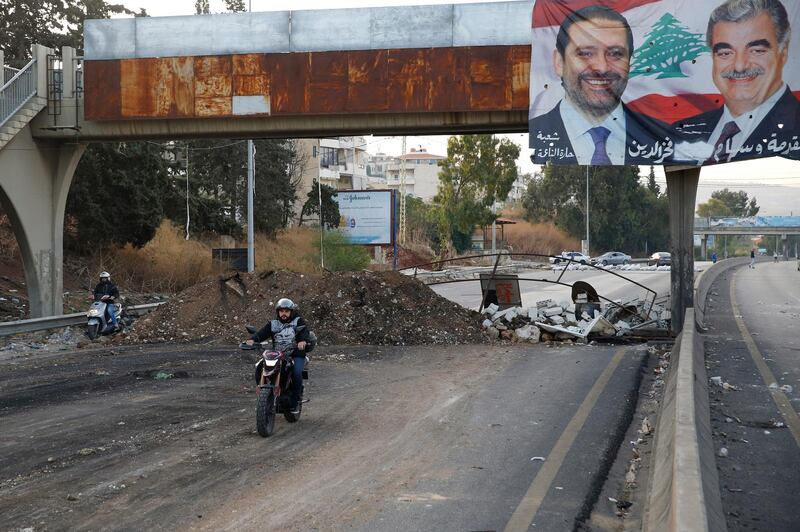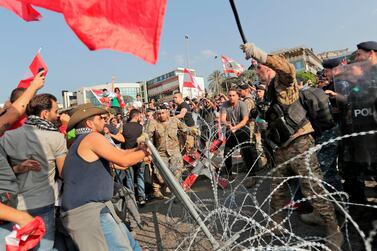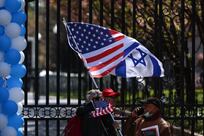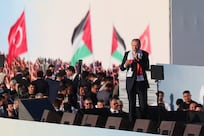With the Lebanese sinking deeper into the realisation that their country's national finances have been plundered, many are reflecting on the system that made this possible. They are beginning to comprehend that the post-war economy was something of a giant Ponzi scheme, enriching a few leading politicians and banks, with no regard for their own welfare, as they now face the prospect of losing all their savings.
Two things characterised the Lebanese system that evolved after the end of the civil war in 1990. The first was the political order put in place by the new constitution agreed in 1989, which effectively created the conditions for a division of the nation’s spoils among major sectarian leaders; the second was the way post-war reconstruction was managed by the late prime minister Rafik Hariri after 1992.
In 1989, Lebanese parliamentarians agreed to a new constitution in Saudi Arabia. The Taif Agreement integrated a number of reforms agreed over the previous decade and a half, and effectively took much power away from the Maronite president and redistributed it to the council of ministers, which would no longer be subordinate to the presidency. The cabinet became Lebanon’s prime executive authority and the system of compromise ensured that it would most often be made up of the country’s main sectarian representatives.
The new constitution mandated equal representation of Christians and Muslims in government institutions – parliament, the government and the civil service. This quest for balance came to mean that all decisions had to be decided by compromise. Consequently, cabinets became unwieldy as every decision had to be negotiated between political forces to reach a consensus. With billions of dollars at stake in the reconstruction process, each of these forces had a rationale for blocking policies to secure a larger share of state contracts.
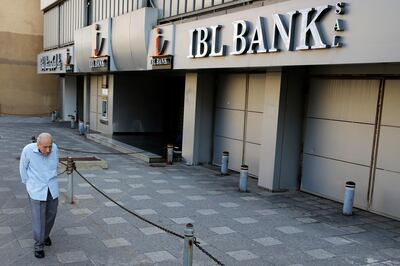
The behaviour of then prime minister Rafik Hariri, the main patron of the reconstruction project, only consolidated this unhealthy trend. The late prime minister was in a hurry to rebuild Lebanon and hence resorted to numerous strategies to remove obstacles to his major projects swiftly.
That resulted in a system that allowed major politicians, many of them former warlords, to take a cut from major reconstruction contracts, which would give them an incentive to facilitate their passage and implementation. They were handed key ministries, which created a nexus between the warlords or their followers, and the extraction of rent from state bodies.
Hariri also guided reconstruction through the Council for Development and Reconstruction (CDR), which directly answered to his office. The CDR became a sort of super reconstruction ministry in the early post-war years, and through its authority pushed many ministries into a subordinate role. The result was that former warlords gained in wealth and power while ministries often became toothless organisations, dominated by politicians and marginalised by the CDR.
In parallel, Hariri funded post-war reconstruction mainly by stabilising the national currency and preserving its pegging to the dollar. This allowed him to issue domestic debt with high interest rates, enriching the banks that had ties with the political class. The problem was that the interest rates effectively killed any incentive for banks to make money by loaning to the private sector, since they could earn much more by holding high-interest treasury bills.
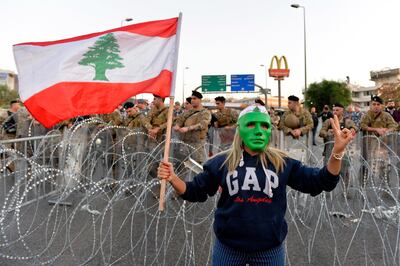
This induced apathy in banks, who over the years rolled over the debt by purchasing new treasury bills, creating a ballooning domestic debt. That, and the fact that the political class was digging deep into reconstruction funding to finance itself and its partisans, meant that the bank deposits of Lebanese citizens only existed on paper while their money was siphoned off through corrupt practices into the accounts of politicians who divided the nation’s wealth among themselves.
This theft of state resources has now reached breaking point. The political cartel knows that if the economy were to collapse, politicians would struggle to revive the system that lined their pockets for three decades. More worrying for them, Lebanon could be on the verge of a social revolution, with all that entails for their personal interests. Today only Hezbollah offers them protection, because the party views the corrupt system as having provided it with cover to retain its weapons.
The Taif constitution and Hariri's reconstruction programme were needed at their particular moment. However, they became instruments facilitating Lebanon's descent into a system consisting not so much of power-sharing, as many claimed, but of pie-sharing. Lebanese citizens knew their politicians were noxious and that the system was unsustainable but their support was always built on the notion that sectarian leaders would redistribute the wealth downwards. Today, Lebanon is bankrupt and there is no longer anything to distribute.
This suggests that the old system cannot simply be rebuilt as it was. However, neither the politicians nor Hezbollah have a desire to give it up. Lebanon is heading toward much more than bankruptcy; it is entering a long period of political emergency, where there is a need to transform the system into something that can benefit the majority. A political crisis on top of an economic calamity is a recipe for many years of strife ahead.
Michael Young is editor of Diwan, the blog of the Carnegie Middle East programme, in Beirut
